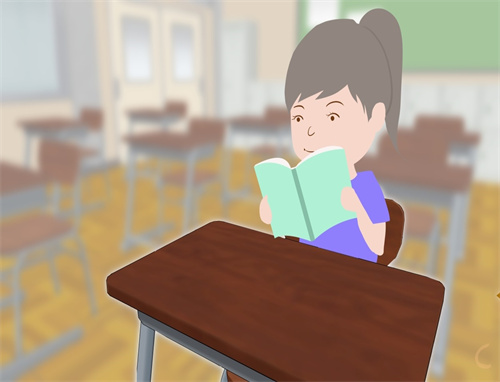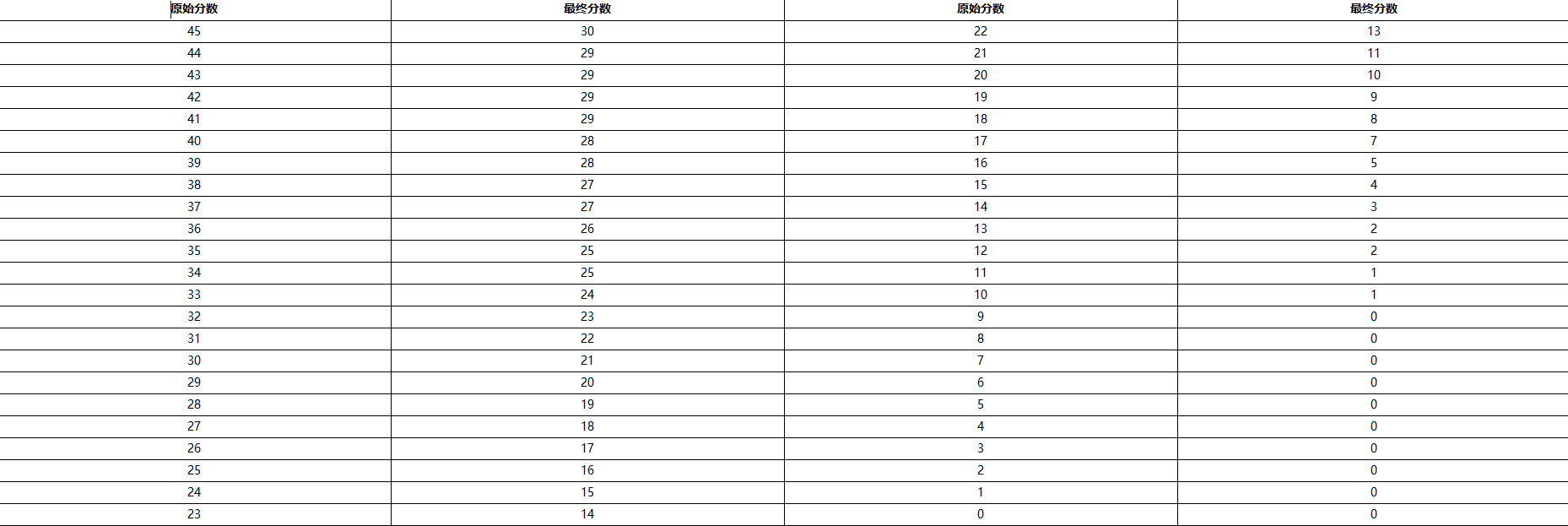雅思阅读题型是怎样的呢?知己知彼百战不殆。今天小编给大家带来了雅思阅读题型介绍希望能够帮助到大家,下面小编就和大家分享,来欣赏一下吧
雅思阅读题型介绍
文章介绍
第一部分的内容选自通知、广告、时间表、宣传品、以及其它类似的内容。第二部分的内容选自大学招生简章、课程介绍、大学课程介绍、图书馆指引、规定、以及其它类似的内容。第三部分的内容选自报纸、杂志、期刊、小说或非虚构的书籍、以及其它类似的内容。所有文章总计长度约在2400字左右。
题目形式
雅思考试阅读部分(培训类)有11种基本的题型,部分题型还会有其它的变化形式。
题型1 选择题
题型2 多项配对
题型3 填空
题型4 完成句子
题型5 完成笔记、总结、或流程图
题型6 完成总结
题型7 为段落或文章的部分选择相对应的小标题
题型8 寻找信息
题型9 判断作者观点、看法或文章中的具体信息
题型10 分类
题型11 配对
题型一选择题
题目可能已经给出句子的前半部分,考生需在选项中选择一个的方法答案完成这个句子。题目也可能是一个完整的问题,考生需在选项中选择一个的答案。考生需从四个可供选择的答案A、B、C或D中选择一个的答案。题目的顺序与相对应的信息在文章中出现的顺序是相同的。
这种题型可能出现的形式有:
有时考生需从多于四个可供选择的选项中进行选择,也有可能需选择不止一个作为正确答案。另外,也有可能在一组问题的末尾再提出一个总括性的问题,如为文章选择一个最适合的标题。
题型二多项配对
题目将给出数个选项,考生需将这些可供选择的选项与文章节选或段落进行对应。文章节选或段落用字母所标注,会出现某些选项不被选择的可能,或者有些选项会被用到不止一次。多项配对题考察的是考生在阅读时使用跳读和扫读技巧寻找特定信息的能力。
题型三填空
这种题型要求考生回答关于文章中具体的、事实性的信息的问题,考生需在问卷上填写多个单词或数字进行作答。一般来说,题目的指示会说明“从文章中选取不超过三个单词和/或一个数字作答”,但有些时候是“一个单词”、或“不超过两个单词”、或“四个单词”。数字可以用阿拉伯数字、也可以用文字的形式填写。如果考生填写了超过问题指示中所要求的字数,即使所填的内容中包含正确的答案,也会被扣分。缩写的单词不会被作为考试的内容。带有连字符的单词按照一个单词计算。
这种题型要求考生能够有效地进行跳读,在文章中寻找相关的段落,并能够有效地进行扫读,寻找相关的句子并对详细信息进行仔细阅读。题目的顺序通常是经过了编排的,所以答案出现的顺序通常来说是与文章的顺序相同的。
题型四完成句子
• 第一种形式:考生需按照要求的字数完成一个从文章中抽取出来的句子。
• 第二种形式:题目中给出了前半个句子(该句与文章内容有关),考生需从若干个选项中选取合适的内容完成这个句子。考生有时需要多次使用某一个选项作答。
如果是第一种形式,题目的指示中会说明考生最多可以使用多少个单词。最常见的指示会说明“用不超过三个单词和/或一个数字作答”,但有些时候是“一个单词”、或“不超过两个单词” 、或“四个单词”。数字可以用阿拉伯数字、也可以用文字的形式填写。
如果考生填写了超过问题指示中所要求的字数,即使所填的内容中包含正确的答案,也会被扣分。缩写的单词不会被作为考试的内容。带有连字符的单词按照一个单词计算。在考生需填写单词完成句子的题目中,单词必须是直接从文章中选取的。如果是第二种形式,考生需从若干个答案中选择的答案进行作答,并将答案所对应的字母填写在答卷上。选择的答案数量比问题的数量要多。
在几乎所有需要将句首和句尾进行配对的题目里,可供选择的句尾的语法都是符合语法规则的。考生需按照意思来将句首和句尾进行配对,而不是通过语法。文章中题目出现的顺序是与文章的顺序相同的。
题型五完成笔记、表格或流程图
考生需要使用一个或多个单词来填写笔记、表格或流程图里的空格。题目的指引中会清楚地说明需选择一个词、不超过两个词、三个词或者四个词等。这种题型要求考生需能够有效地进行跳读,在文章中寻找相关的段落,并能够有效地进行扫读,寻找相关的句子并对详细信息进行仔细阅读。对于这种题型来说,答案通常会集中出现在文中某一部分,而不是散落在整篇文章中。
• 第一种形式:考生需从题目所提供的一组单词和词组中选取合适的一个单词或多个单词进行填空,可选择的单词或词组数量会比需要填写的单词的数量要多。
• 第二种形式:没有可供选择的单词,考生需从文章中选取一个单词或词组进行填空。
题型六完成总结
考生需要使用一个单词或者多个单词来填写笔记、表格或流程图里的空格。如果考生需从文章中选取单词或数字进行填空,题目的指引中会清楚地说明需选择一个词、不超过两个词、三个词或者四个词等。对于这种题型来说,答案通常会集中出现在文中某一部分,而不是散落在整篇文章中。
这种题型最常出现在雅思考试阅读(培训类)的第三部分,但也有可能出现在其他部分。完成总结的对象可能是整篇文章也可能是文章的一部分。有时题目会给出总结所需的小标题,可以帮助考生找到需要进行总结的部分。需要总结全文的题目是考察考生寻找要点的能力,需要总结部分文章的题目考察的是考生寻找补充性的细节信息。
• 第一种形式:考生需从题目所提供的一组单词和词组中选取合适的一个单词或多个单词进行填空,可选择的单词或词组数量会比需要填写的单词的数量要多。
• 第二种形式:没有可供选择的单词,考生需从文章中选取一个单词或词组进行填空。
题型七为段落或文章的部分选择相对应的小标题
题目会给出一组小标题,这些小标题对应文章中的部分段落。考生需将这些小标题与具体的段落进行配对。通常考生需要对7-8个小标题进行配对,而文章可能有不止7-8个段落,有一些小标题可能已经作为示范进行了配对。小标题的数量总是比段落的数量要多,而且每个小标题只能使用一次,所以考生需要进行仔细思考再选择。这种题型考察的是考生区分要点和补充性细节信息的能力。
题型八寻找信息
在这种题型中,题目出现的顺序与信息出现的顺序是不相同的。考生不一定需要在每一段文章中寻找信息。但考生有可能需要在同一个段落里寻找不止一个信息,在这种情况下,题目的指引中会对此进行说明。这种题型考察考生在段落中寻找特定信息的能力。
考生需要寻找的信息包括:
• 特定信息
• 某种事情/事物的例子
• 事件等发生的原因
• 一个描述
• 一个总结
• 一个解释
• 其他
题型九判断作者观点、看法或文章中的具体信息
题目会提供一组表示意见/看法,或是事实性信息的陈述。这种题型考察考生进行跳读、扫读和对细节进行阅读理解的能力。
• 针对意见或看法,考生需回答这些陈述是否符合或反映了作者的观点或看法。答案的形式有“是”(YES)、“否”(NO)、或“无从判断”(NOT GIVEN)。
• 针对事实性信息,考生需回答这些陈述是否与文章中的信息一致。答案的形式有“一致”(TRUE)、“不一致”(FALSE)、或“无从判断”(NOT GIVEN)。
题型十分类
题目会提供一组信息、以及数个类别,这些类别用一个或多个字母代表。考生需根据信息的共性将这些信息归类到各个类别中。这种题型考察考生能否区分文中信息之间的关系和关联,最常见于涉及事实性信息的文章中,如说明文。考生需要进行跳读和扫读以寻找相关的信息并对细节进行阅读理解。
题型十一配对
题目会提供一组内容,如原理、观点、人名、地名、物品等。考生需将这些内容与一组选项中的相应内容进行配对。题目指引中会对是否需要使用多次进行配对进行说明。这种题型考察考生进行跳读和扫读的能力,以及阅读理解文中某一部分要点的能力。
提示:
• 应仔细阅读题目的指示和说明,这些信息会告诉你在哪里寻找答案、需要如何回答问题、以及答案字数的限定。题目里的指示还会说明答案是否可以多次使用,并提醒你把答案转抄到答卷上。
• 注意大多数的题型下,题目出现的顺序和信息在文章中出现的顺序都是一致的。
• 进行扫读练习,以便能在文章片段中快速寻找与题目相关的关键词。你也可以用扫读练习在段落中寻找关键词。
• 在大多数情况下(如填空题),你所填写的答案需符合正确的语法要求,正确的单词拼写和词组搭配是非常重要的,出现错误是要被扣分的。
• 在大多数情况下,你可以在文章里找到需要填写的单词,并应将这个词正确仔细地抄在答卷上。运用笔记、表格、图表或流程图中的内容以及范例来预测答案所涉及的信息的类型。
• 在辅导课上,与同学和老师讨论每种题型下答案可能出现的形式。
• 在阅读的时候将关键词和词组用下划线标记出来,并注意题目中的关键词与文中关键词的联系。
• 熟悉同义词以及带有概括作用的词汇,这可以帮助你找到相关信息。
• 练习如何用不同的方式表达相同的意思和信息。
• 思考某些信息之间有什么共性、又有什么不同之处。
• 练习相关的阅读技巧,如跳读、扫读,用于寻找信息。
• 有些考生认为只有做题才能帮助提高成绩,因此陷于题海战术。这并不能让考生按照希望的那样快速提高成绩,这对备考和英语学习是不利的。备考的过程中应该广泛阅读不同的材料,如报纸、期刊、杂志和书籍,并利用这些资源为备考服务。
• 注意熟悉不同的文体,并且练习如何更好地理解这些文体。在练习中熟悉所有雅思考试阅读(培训类)的题型。
• 要注意阅读的方法不止一种。有的考生会一字一句地慢慢地仔细阅读,并把所有的生词划出来,还因为这些生词而打断了阅读的连贯性。你应该明确,考试的主要任务是找到题目的答案,因此考试中运用的阅读技巧与你需要记忆内容时所用的阅读技巧是不同的。考试过程中不应过于担心出现的生词,同时应该在平时多加练习如何根据上下文的语义来猜测生词的意思,尽量不要用字典查每一个生词。
• 在任何时候都要认真阅读题目的指示。有些题型是会有不同的变化形式的,如果不明确题目的要求,你是很容易出现混淆而导致出错的。
• 在阅读的时候应该注意时间限制。如果某个题目你一时找不到答案,就应该继续做下一道题目,避免在某一道题目上花费过多的时间。
• 注意不要过于依赖于从文中寻找某个词来作答。你应该练习如何改述、在文中找到改述的内容。
• 遇到那些题目出现的顺序与文章顺序一致的题型,要记得你是无须返回前文寻找每一个问题的答案的。
雅思考试阅读理解预测试题及答案
In the earliest stages of man's development he had no more need of money than animals have. He was content with very simple forms of shelter, made his own rough tools and weapons and could provide food and clothing for himself and his family from natural materials around him. As he became more civilized, however, he began to want better shelter, more efficient tools and weapons, and more comfortable and more lasting clothing than could be provided by his own neighborhood or by the work of his own unskilled hands. For these things he had to turn to the skilled people such as smiths, leather workers or carpenters. It was then that the question of payment arose.
At first he got what he wanted by a simple process of exchange. The smith who had not the time to look after land or cattle was glad to take meat or grain from the farmer in exchange for an axe or a plough. But as more and more goods which had no fixed exchange value came on the market, exchange became too complicated to be satisfactory. Another problem arose when those who made things wanted to get stocks of wood or leather, or iron, but had nothing to offer in exchange until their finished goods were ready.
Thus the difficulties of exchange led by degrees to the invention of money. In some countries easily handled things like seeds or shells were given a certain value and the farmer, instead of paying the smith for a new axe by giving him some meat or grain, gave him so many shells. If the smith had any shells left when he had bought his food, he could get stocks of the raw materials of his trade. In some countries quite large things such as cows or camels or even big flat stones were used for trade. Later, pieces of metal, bearing values according to the rarity of the metal and the size of the pieces, or coins were used. Money as we know it had arrived.
1. Exchange of goods became difficult because _________.
A man became more civilized
B smiths began to look after land or cattle in their spare time
C more and more goods which had no fixed exchange values came to the marker
D farmers hadn't enough grain or meat to provide for skilled workers
2. Money was not used until _______.
A paper was invented
B people practiced a simple process of exchange
C nothing could be offered in exchange
D the exchange of one thing for another became too complicated
3. The best title for this passage is _____.
A What is money
B What are money's functions.
C The importance of money
D The beginning of money
注释:
1. stage 阶段;时期at an early stage in our history
在我们的历史早期
(前面与the连用)演员生涯;剧院工作;戏剧工作 行程,旅程
to travel by easy stages 从容旅行
2. content n.内容,容量,目录,满足adj.满足的, 满意的, 愿意vt.使满足
We should never content ourselves with a little book knowledge only. 我们切不可满足于仅仅有一点点书本知识。
3. shelter n.掩蔽处,身避处,掩蔽,保护,庇护所,掩体v.掩蔽,躲避
He stood in the shelter at the bus stop. 他站在公共汽车站的候车亭里。
4. smith n.铁匠,金属品工匠
leather n.皮革,皮革制品
carpenter n.木匠
5. axe or plough 斧或犁
6 complicate 使复杂化,使错综加重(疾病)使混乱,难做、难懂;使恶化
be complicated in 卷入……(的麻烦中)
Don't complicate life for me! 不要为我把生活搞复杂了!
答案:1 C 2 D 3 D
雅思考试阅读理解模拟测试题及答案
Next Year Marks the EU's 50th Anniversary of the Treaty
A. After a period of introversion and stunned self-disbelief, continental European governments will recover their enthusiasm for pan-European institution-building in 2007. Whether the European public will welcome a return to what voters in two countries had rejected so short a time before is another matter.
B. There are several reasons for Europe's recovering self-confidence. For years European economies had been lagging dismally behind America (to say nothing of Asia), but in 2006 the large continental economies had one of their best years for a decade, briefly outstripping America in terms of growth. Since politics often reacts to economic change with a lag, 2006's improvement in economic growth will have its impact in 2007, though the recovery may be ebbing by then.
C. The coming year also marks a particular point in a political cycle so regular that it almost seems to amount to a natural law. Every four or five years, European countries take a large stride towards further integration by signing a new treaty: the Maastricht treaty in 1992, the Treaty of Amsterdam in 1997, the Treaty of Nice in 2001. And in 2005 they were supposed to ratify a European constitution, laying the ground for yet more integration—until the calm rhythm was rudely shattered by French and Dutch voters. But the political impetus to sign something every four or five years has only been interrupted, not immobilised, by this setback.
D. In 2007 the European Union marks the 50th anniversary of another treaty—the Treaty of Rome, its founding charter. Government leaders have already agreed to celebrate it ceremoniously, restating their commitment to "ever closer union" and the basic ideals of European unity. By itself, and in normal circumstances, the EU's 50th-birthday greeting to itself would be fairly meaningless, a routine expression of European good fellowship. But it does not take a Machiavelli to spot that once governments have signed the declaration (and it seems unlikely anyone would be so uncollegiate as to veto it) they will already be halfway towards committing themselves to a new treaty. All that will be necessary will be to incorporate the 50th-anniversary declaration into a new treaty containing a number of institutional and other reforms extracted from the failed attempt at constitution-building and—hey presto—a new quasi-constitution will be ready.
E. According to the German government—which holds the EU's agenda-setting presidency during the first half of 2007—there will be a new draft of a slimmed-down constitution ready by the middle of the year, perhaps to put to voters, perhaps not. There would then be a couple of years in which it will be discussed, approved by parliaments and, perhaps, put to voters if that is deemed unavoidable. Then, according to bureaucratic planners in Brussels and Berlin, blithely ignoring the possibility of public rejection, the whole thing will be signed, sealed and a new constitution delivered in 2009-10. Europe will be nicely back on schedule. Its four-to-five-year cycle of integration will have missed only one beat.
F. The resurrection of the European constitution will be made more likely in 2007 because of what is happening in national capitals. The European Union is not really an autonomous organisation. If it functions, it is because the leaders of the big continental countries want it to, reckoning that an active European policy will help them get done what they want to do in their own countries.
G. That did not happen in 2005-06. Defensive, cynical and self-destructive, the leaders of the three largest euro-zone countries—France, Italy and Germany—were stumbling towards their unlamented ends. They saw no reason to pursue any sort of European policy and the EU, as a result, barely functioned. But by the middle of 2007 all three will have gone, and this fact alone will transform the European political landscape.
H. The upshot is that the politics of the three large continental countries, bureaucraticmomentum and the economics of recovery will all be aligned to give a push towards integration in 2007. That does not mean the momentum will be irresistible or even popular. The British government, for one, will almost certainly not want to go with the flow, beginning yet another chapter in the long history of confrontation between Britain and the rest of Europe. More important, the voters will want a say. They rejected the constitution in 2005. It would be foolish to assume they will accept it after 2007 just as a result of an artful bit of tinkering.
Questions 1-6 Do the following statemets reflect the claims of the writer in Reading Passage 1?
Write your answer in Boxes 1-6 on your answer sheet.
TRUE if the statemenht reflets the claims of the writer
FALSE if the statement contradicts the claims of the writer
NOT GIVEN if it is possbile to say what the writer thinks about this
1. After years' introspection and mistrust, continental European governments will resurrect their enthusiasm for more integration in 2007.
2. The European consitution was officially approved in 2005 in spite of the oppositon of French and Dutch voters.
3. The Treaty of Rome , which is considered as the fundamental charter of the European Union, was signed in 1957.
4. It is very unlikely that European countries will sign the declaration at the 50th anniversary of the Treaty of Rome.
5. French government will hold the EU's presidency and lay down the agenda during the first half of 2008.
6. For a long time in hisotry, there has been confrontation between Britain and the rest of European countries.
雅思阅读考试小范围预测
The tuatara-past and future 动物
The meaning of history study 人文社科
Birds intelligence 动物
Food Addictive 工业
Ancient Greek Coins 人文社科 20140118 20120510
Culture and Communication人文社科
Ocean power 能源 20150829A 20091024
Who should look after the child? 人文社科 Paper money 发展史
Hibernation 动物
Human Rights to animal 人文社科
Blind to Change 心理学
Skink in New Zealand 动物
Odd and curious money 人文社科
Living with uncertainty 自然环境
The power of music 艺术
Japan's ancient pottery 历史
Fish communications 动物
Darkside of Technological Boom 科技
Children's adults 文学
Does class size matter?教育
Trade 发展史
The history of Russian Ballet 发展史
Aquaculture in New Zealand 农业
We have star performers 商业管理
The influence of social network to people's loneliness人文社科
Expert in musician 人文社科
Butterfly farms in UK 农业
Consumer advertisement 商业管理 20160305 20141002
Children and robot 科技 20160305 20141002
Typography Introduction of Printed books 发展史
Fluoridation in the water 医疗健康
Undergraduate students study dramas 人文社科
Unique golden textile 工业
British Woodlands 自然环境
Coastal sculpture 艺术
Solving an Arctic Mystery 人文社科
When did music begin? 艺术
Tick Tock Body clock 生物
The importance of being playful 人文社科
Entrepreneur training 商业管理
SSDP Project 环保
Newly Hatched birds 动物
Egypt‘s Sunken Treasures 考古
Alcohol fuel in England 能源
New Zealand Home Textile Craft 人文社科
Sweet Trouble–Australia sugarcane industry 农业
The Grimme Fairy Tale人文社科
Gesture 人文社科
Dust and American 环保
Australia Parrots 动物
An ancient city- Titris Hoyuk考古
雅思阅读题型介绍相关文章:
★ 雅思口语常见题型如何回答拿高分
★ 雅思a类阅读8种主要题型技巧总结
★ 雅思阅读目的题题型特征分析及做题方法解析
★ 雅思阅读各类题型和解题技巧汇总
★ 雅思阅读题型解题小技巧
★ 雅思写作提高方法
雅思阅读题型介绍
上一篇:揭秘雅思阅读做题的3字诀
下一篇:雅思阅读选择题答题技巧






